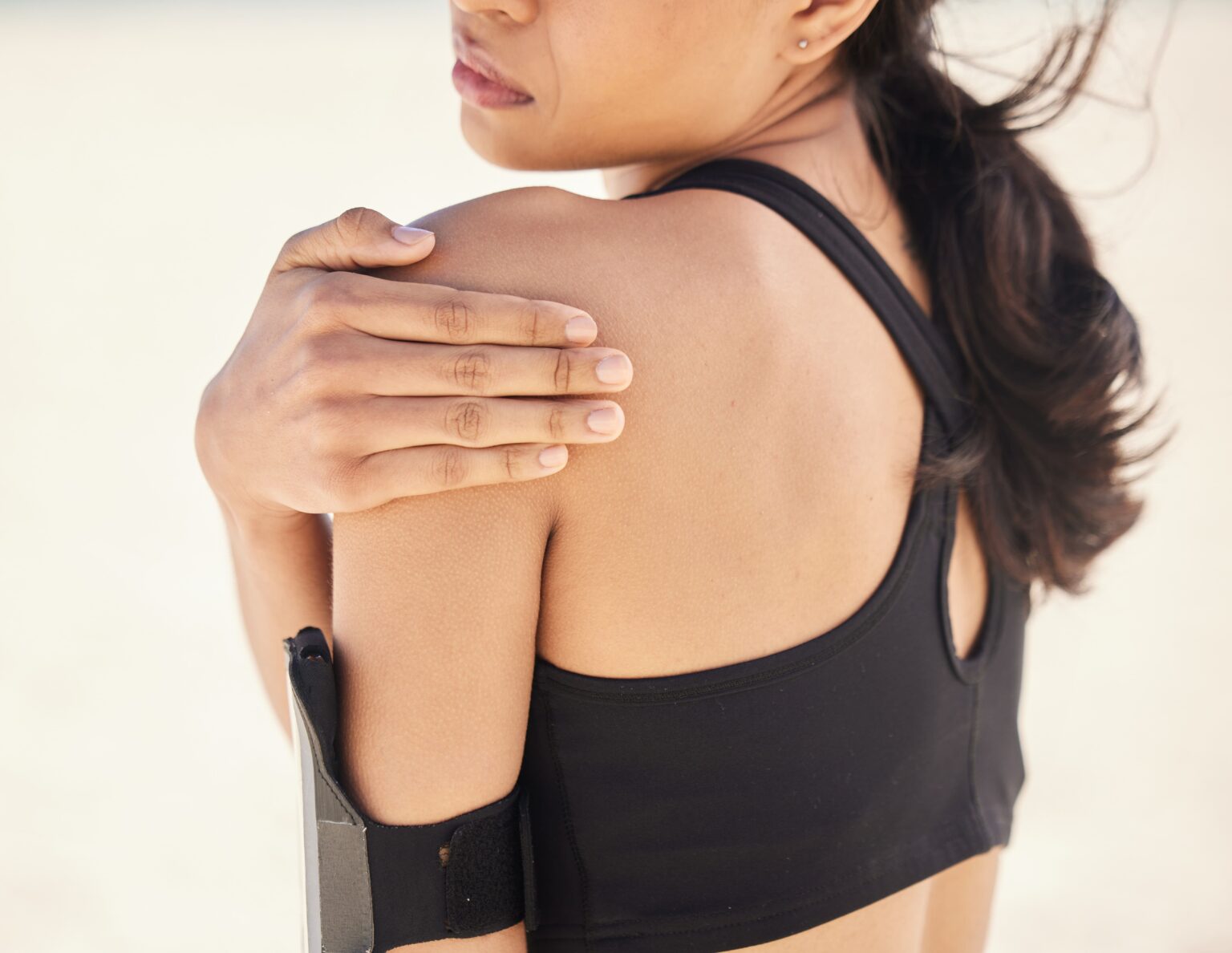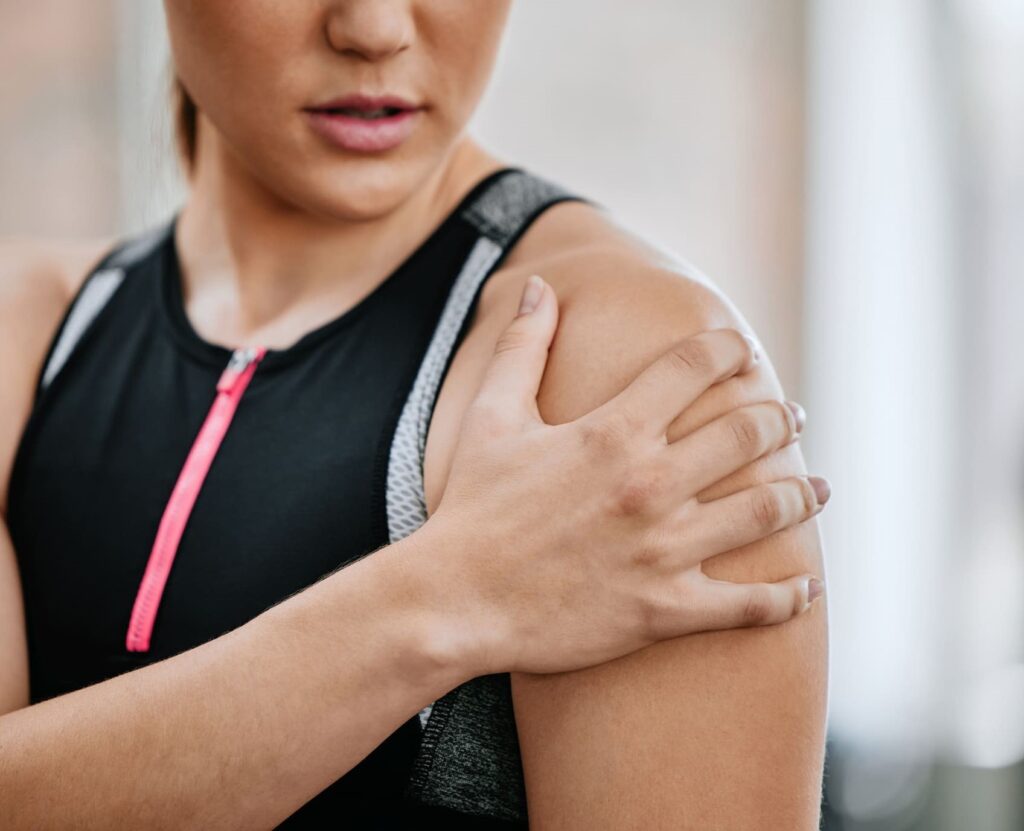Schedule An Appointment With Us
Are Your Symptoms Affecting Your Quality Of Life?
Consult our MOH-accredited orthopaedic specialist for an accurate diagnosis & personalised treatment plan today.

MBBS (S’PORE)
MRCS (Ireland)
MMed (Ortho)
FRCSEd (Ortho)

Shoulder instability occurs when the structures surrounding the shoulder joint do not work to maintain the ball within its socket. This condition can lead to an increased risk of the shoulder joint becoming dislocated.
The stability of the shoulder is maintained by a balance of muscular forces, ligaments, and the bony anatomy of the joint. When any of these components are compromised, it can lead to shoulder instability. This condition can vary in severity from a feeling of the shoulder being loose to recurrent dislocations.
Understanding the causes of shoulder instability is pivotal in determining the appropriate treatment strategy.
Shoulder instability can manifest in various forms, each characterised by the direction of instability and the underlying causes.
This type typically occurs in younger, active individuals as a result of a significant injury or trauma. The instability is often unidirectional, meaning it occurs in a single direction, usually anterior (forward). This form of instability is frequently associated with a labral tear.
Atraumatic instability develops without a history of injury or trauma. It is often multidirectional, meaning the shoulder can become unstable in multiple directions. This type is more common in individuals with generalised joint laxity and can be related to repetitive overhead activities or inherent ligamentous looseness.
In some cases, individuals can voluntarily dislocate their shoulder joint. This is often due to neuromuscular disorders or psychological issues and requires a different approach in terms of treatment and management.
Shoulder instability can also occur after surgical procedures on the shoulder. This may be due to inadequate healing, failure of the surgical repair, or a new injury.
This type develops over time due to repetitive activities or overuse that gradually stretch the shoulder ligaments, leading to instability. It is commonly seen in athletes involved in sports that require repetitive shoulder motions.
The symptoms of shoulder instability can vary depending on the severity and type of the instability. Recognizing these symptoms is crucial for early diagnosis and effective management.


Schedule An Appointment With Us
Consult our MOH-accredited orthopaedic specialist for an accurate diagnosis & personalised treatment plan today.
Diagnosing shoulder instability involves a combination of clinical evaluation and diagnostic imaging.
The orthopaedic surgeon will ask about any previous shoulder injuries, the frequency and circumstances of shoulder dislocations or feelings of instability, and any activities that exacerbate symptoms. During the physical examination, they will assess the range of motion, strength, and stability of the shoulder.
Imaging tests play a crucial role in diagnosing shoulder instability and understanding its extent. Common imaging modalities include:
In some cases, shoulder arthroscopy may be recommended. This is a minimally invasive surgical procedure where a small camera (arthroscope) is inserted into the shoulder joint, providing a clear view of the inside of the joint to assess and possibly repair damage.
The orthopaedic surgeon may perform specific physical tests to assess the stability of the shoulder in various directions. These tests help in identifying the pattern of instability.
In cases where surgery is not indicated or as a first-line approach, non-surgical treatment are used in managing shoulder instability.
Initially, it may be necessary to rest the shoulder and modify activities to reduce pain and prevent further injury. This involves avoiding activities that trigger symptoms or put excessive strain on the shoulder.
A cornerstone of non-surgical treatment, physical therapy aims to strengthen the muscles around the shoulder, particularly the rotator cuff and scapular stabilisers, to enhance joint stability.
NSAIDs can be used to reduce pain and inflammation associated with shoulder instability.
In some cases, particularly after a dislocation, immobilising the shoulder with a sling or brace may be necessary to allow the injured structures to heal.
Corticosteroid injections into the shoulder joint may be considered in cases with significant inflammation and pain. However, their use is generally limited due to potential adverse effects on joint structures.
For athletes or individuals engaged in specific activities, targeted training to improve techniques and shoulder mechanics can be crucial in preventing recurrent instability.
Techniques such as ice, heat, and transcutaneous electrical nerve stimulation (TENS) can be used for pain management.
Surgical intervention may be considered for shoulder instability, particularly in cases where non-surgical treatments have been ineffective, or the instability is severe or recurrent.

MBBS (S’pore)
MRCS (Ireland)
MMed (Ortho)
FRCSEd (Ortho)
Dr Kau (许医生) is a Fellowship trained Orthopaedic Surgeon with a subspecialty interest in Hip and Knee surgery and has been in practice for more than 15 years.
He is experienced in trauma and fracture management, sports injuries, and joint replacement surgery.
Prevention of shoulder instability primarily focuses on measures to strengthen the shoulder, improve joint mechanics, and avoid activities that may predispose to injury.
For Singaporeans, Singapore Permanent Residents and Foreigners.
Please speak to our friendly clinic staff about using your insurance plans.

If you have any enquiry, please do get in touch. Leave us a message and we will get back to you shortly.
Mild cases of shoulder instability may improve with rest, physical therapy, and appropriate lifestyle modifications. However, more severe cases, particularly those involving structural damage, usually require medical intervention for complete resolution.
Surgery is not always necessary for shoulder instability. It is considered in cases where non-surgical treatments have failed to provide relief or stability, or when the patient experiences recurrent shoulder dislocations. The necessity for surgery also depends on the patient’s age, activity level, and overall health.
The recovery period after shoulder instability surgery varies based on the type of surgery performed and the patient’s adherence to a rehabilitation program. For arthroscopic procedures, the typical recovery time ranges from 4 to 6 months, while open surgeries might require 6 to 12 months for full recovery.
Rehabilitation plays a crucial role and includes a progressive program of physical therapy focusing on gradually increasing strength and mobility in the shoulder. Return to sports or high-level activities is usually based on the successful completion of rehabilitation milestones and clearance from an orthopaedic surgeon.
Untreated shoulder instability can lead to recurrent dislocations, which may cause further damage to the shoulder joint. This ongoing instability increases the risk of developing chronic shoulder pain and may accelerate the development of osteoarthritis in the joint. Repeated dislocations can also lead to a decrease in shoulder function and an increased likelihood of requiring surgery in the future.